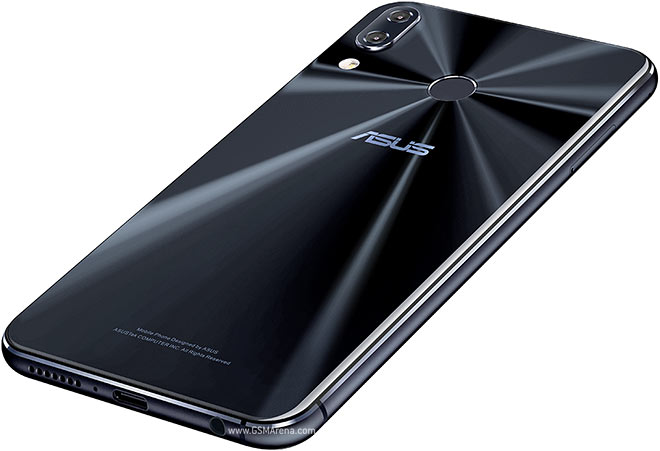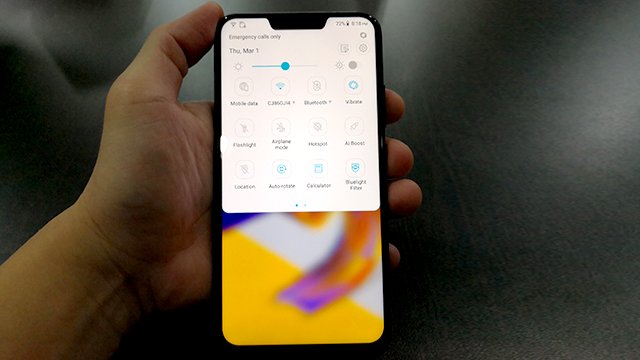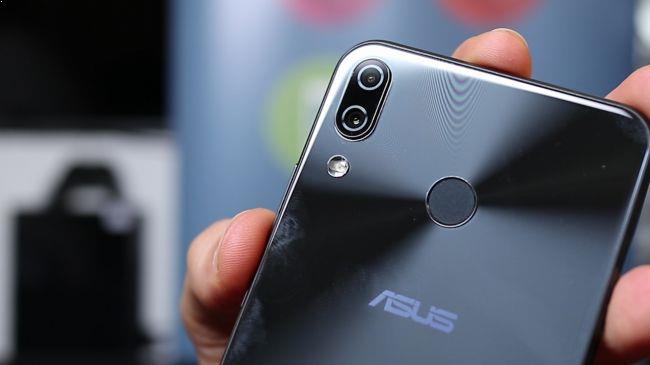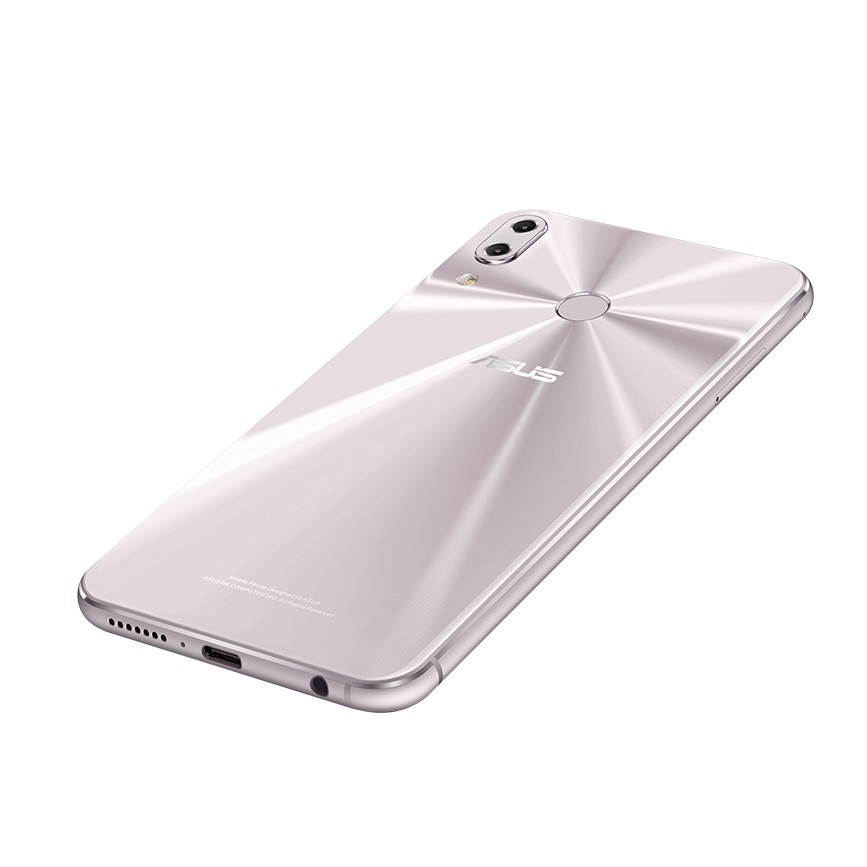I caught an early look at a pre-production
version of the regular Asus ZenFone 5, and from what I’ve seen, it’s a pretty
swish handset. The Asus Zenfone 5 is a bit
like the OnePlus 6. It looks and feels similar to a more expensive
phone and has impressive tech inside, but is fairly affordable. The base design
is similar to Asus’ 2017 flagship, the ZenFone 4. It has a metal frame with a glass back and front. The USB-C
socket and 3.5mm headphone jack are positioned in the same place, along the
phone’s bottom edge.

The fingerprint scanner remains top-center on the
ZenFone’s rear panel. Power up the ZenFone, however, and you’ll realize it’s a
completely different device. You get a rich 6.2-inch screen, a
mid-range Qualcomm chipset and generally capable cameras that let you take
normal and ultra-wide shots. Its night shooting performance could
be better, and it needs some stability fixes, but this phone represents great
value. However, given that the OnePlus 6 and others exist it has got some
competition.
DESIGN
There’s nothing to complain about in the numbers, though. The Asus
Zenfone 5 is 7.7mm thick. As it has a slim border and notched design, it’s very pocket-able and easy to handle for a device with a 6.2-inch screen. 6-inch
phones used to feel like phone-tablet crossbreeds. This is definitely a phone.This is a shiny, almost dazzling finish, but it’s nowhere near as
reflective as the Honor 10, another top pick at the price. The glass blurs
reflections, avoiding the mirror-like finish some phones have.It also has a design touch or two used in Asus’s ZenBook laptops. A
layer that plays with reflected light sits under the rear glass, making it look
as though beams fire out of the back fingerprint scanner in all directions.
Sometimes it works fine and is just a little
slow compared to the best. At other times it repeatedly fails to recognize your
finger, making you input your PIN or password instead.The Zenfone 5 likely uses scanner parts similar to those of other
mid-range phones, so this is most likely a problem with the software rather
than the hardware. However, it is annoying. And as you’ll see through this
review, all of the phone’s issues are down to similar lapses in optimization.
SCREEN

The Asus Zenfone 5 has a 6.2-inch 19:9 screen
with a notch. This is a great screen, for the most part.It’s a 1080 x 2246 LCD, with great sharpness. You can see the mildest
bit of pix-elation if you look very close. But you do have to try.The Asus Zenfone 5’s default color mode is very well-saturated, but this
is because it aims for the deep DCI-P3 color standard, used by video color
graders. We find it just slightly too punchy, but switch to the 'Standard'
color mode and the overexcited look is gone completely.Some of you may find these two modes a bit too rich and under saturated respectively. Standard is an sRGB mode, the screen equivalent of 'no added
sugar' chocolate. We like it, but many of you will want some more energy.A custom screen mode lets you choose the exact saturation level, along
with the color temperature. It’s a near-perfect spread.However, the main issue we found is that there’s no compensation for
parts of the phone that need accurate color. Choose a saturated color mode and
your photos will appear oversaturated, even though they won’t when you upload
them to Instagram.For the most accurate read of your photos, use Standard screen mode.The Asus Zenfone 5 has a screen similar to
the OnePlus 6.
It’s 6.2 inches across, but as it has a notch and a 19:9 aspect
ratio it’s nothing like the 6-inch screens of years ago.This is a larger phone, but not a gigantic one. Its notch is also
larger-than-average too, though. The difference is clear, swapping between the
Zenfone 5, LG G7 Thin Q and OnePlus 6.Part of this is just a thin visual issue. However, it also means fewer
notification icons fit in the notch alcoves. You end up with a '…' icon,
meaning you really have no idea of what your notifications are. You just know
they are there.The clock display also isn’t well-optimized, seeming to get too close to
the edge of the display. However, like the OnePlus 6 the Zenfone 5 also lets
you block-in the notch with black, so you can only tell it’s there in a dimly
lit room. This solves the clock issue, if not the notifications one.We class these issues as little quibbles, not major
disasters, in a phone that focuses on value and camera tech above other
concerns
KEY FEATURES AND CAMERA
Elsewhere, you get a mid-range Snapdragon 636 chipset, 4GB of RAM and
64GB of storage. There's also a 3,300mAh battery that lasts a solid day, or a
day and a half if you go easy on the Zenfone 5.Its screen is large at 6.2 inches, but as it has a notch this handles
like a traditional 5.5-inch phone. It is big rather than gigantic, and those
extra screen inches make games more enjoyable. Asus talks up the Zenfone 5’s camera as its key
feature. It has a 12MP main rear sensor with an MP wide-angle secondary lens.
This sits in place of the zoom camera many high-end phones offer. The main
sensor is large, and it’s stabilized with optical image stabilization (OIS)
too.

THE FINAL CONCLUSION
Asus Zenfone 5 (ZE620KL) offers two colors only , has a non-removable battery , does not come with Java , and even does not have Infrared sensors. Not only this but to make the situation worse it does not offer a barometer or a temperature sensor and is not water & dust resistant .So, in my opinion the phone is an ordinary phone available in the price bracket, but Asus has started developing roots in mobile manufacturing with this flagship product.But the phone for now have better successors. And what about you guys.Did you find the phone good or did you find the phone not worth it? Tell me in the comment section.And if you guys wanna know more or to ask any queries just knock on my facebook portal : NETWORK
LIKE, COMMENT AND SHARE






Comments
Post a Comment